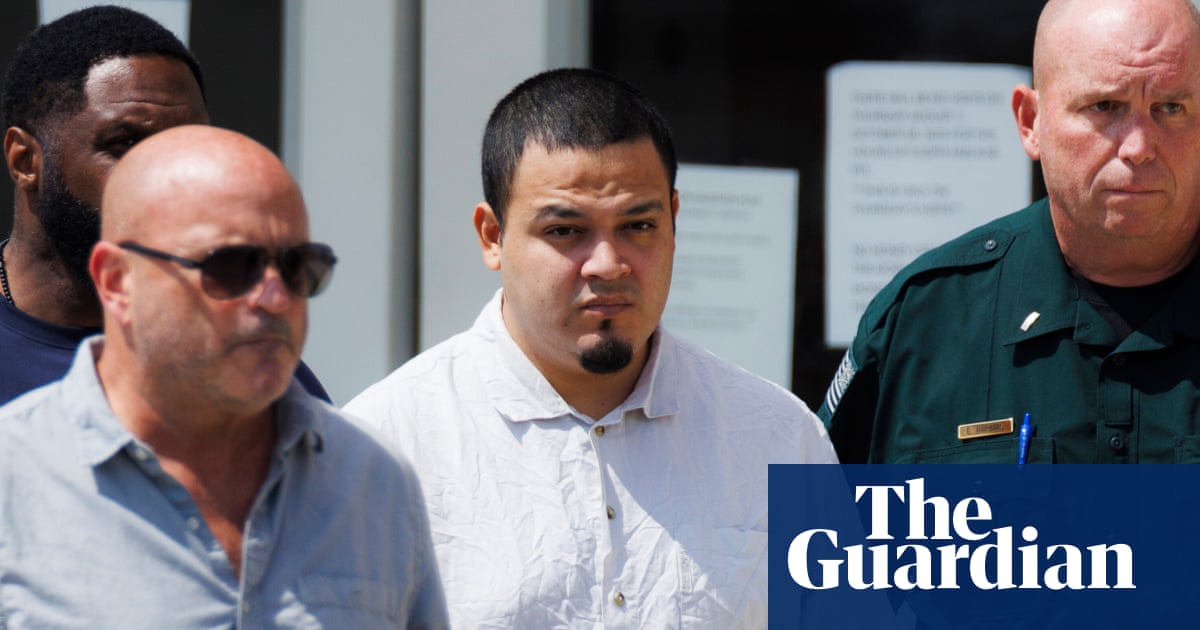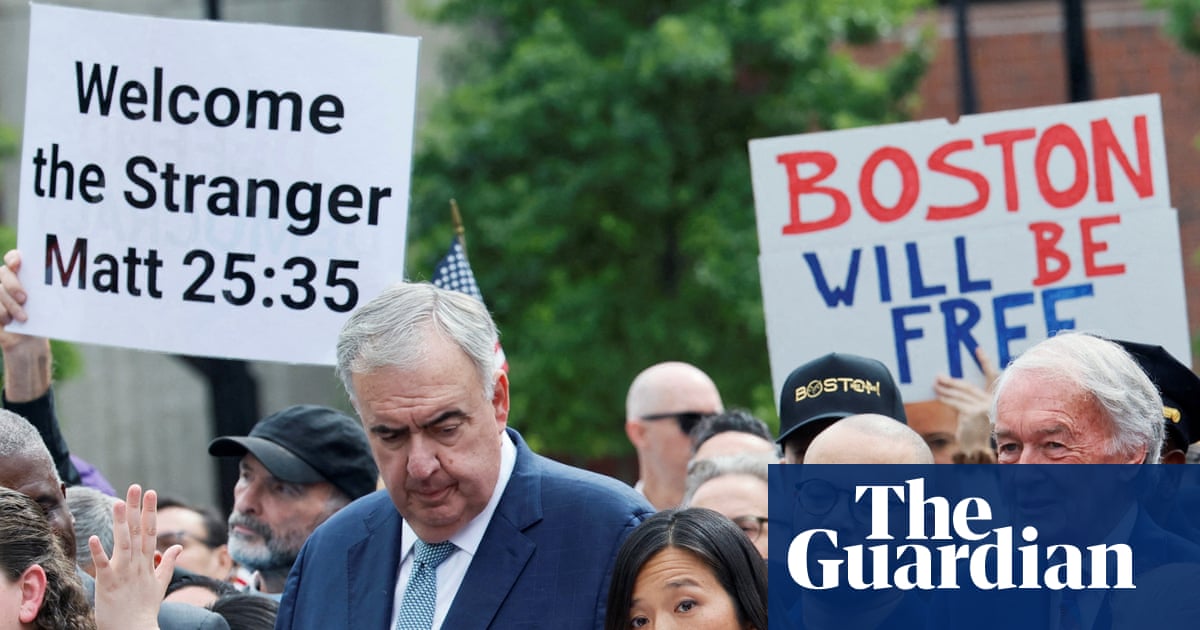It should surprise no one that former cast members from reality shows that ran for more than 15 seasons are running out of new material. Days ago, Donald Trump, former star of NBC’s The Apprentice and current US president, posted a lengthy Truth Social rant in which he (again) threatened the country’s leading cultural institutions to adhere to his political ideology. The target was one he has had in his crosshairs before – the Smithsonian’s National Museum of African American History and Culture (NMAAHC) – which Trump called “OUT OF CONTROL” in his post. “Everything discussed [in NMAAHC exhibits] is how horrible our Country is, how bad Slavery was,” Trump unloaded. “WOKE IS BROKE,” he continued through his customary use of all caps and misplaced capitalization of common nouns. “We have the HOTTEST Country in the World, and we want people to talk about it, including in our Museums.”
The tirade left many wondering what exactly Trump saw as the upsides of slavery, but also where they had previously heard this recycled talking point. The comment seemed to echo comments made just days prior by his fellow reality show bully Jillian Michaels, a former trainer on NBC’s The Biggest Loser, the weight-loss competition show that launched alongside The Apprentice in 2004. Michaels had been making her rounds in media and public appearances, rebranding from verbally abusive fat shamer to Maga influencer.
On CNN’s NewsNight, the host Abby Phillips moderated a roundtable discussion on Trump’s months-long overreach into cultural institutions such as the Kennedy Center and the NMAAHC. Michaels hijacked the conversation into a lament about slavery’s prominence in the massively popular museum’s displays on US history. “[Trump] is not whitewashing slavery, he’s not,” Michaels said. “You cannot tie slavery to just one race, which is what every single exhibit [at NMAAHC] does.” Turning towards the representative Ritchie Torres, who was seated beside her, Michaels unloaded popular far-right talking points. “Do you realize that only less than 2% of white Americans owned slaves?” she continued. “Do you realize slavery is thousands of years old? Do you know who was the first race who tried to end slavery?”
Torres’s interjections that slavery was a system of white supremacy, not a set of individual white acts, went unaddressed by the TV star. (From 20% to 50% of the white population in southern US states owned enslaved people, and all white people nationwide benefited from slavery’s racial order. Michael’s false claims prompted Phillips to later post a public correction.)
The tirade was an escalation of Trump’s previous open declarations to “restore truth and sanity to American history”, an effort to overhaul exhibits and installations across federally operated museums and galleries and politicize their content, with the NMAAHC locked squarely in the administration’s sights for what it called “corrosive ideology”. Previous edicts about the museum, lovingly nicknamed “The Blacksonian” by many of its patrons, had not specifically identified slavery as the White House’s gripe. But Trump’s Truth Social post more directly reflected a return to a century-old tactic to minimize chattel slavery as “not that bad”.
If we have learned anything from reality television, it is that every narrative is scripted. No matter how easily their claims were debunked, both Michaels and Trump were in lock step in their effort to vindicate white people from their role in slavery, both by insisting that slavery’s conditions and aftermath are overblown, and refuting that it played a major role in US history.
These assertions are a refresh of a century-old “lost cause” myth spearheaded by the United Daughters of the Confederacy (UDC), an organization of more than 100,000 white women who set out to make slavery respectable again by rebranding the Confederacy’s bloody image. The “genteel ladies” campaign euphemized slave trading as a “celebration of memory” and “a southern way of life”. Like Michaels, Trump and like-minded slavery deniers, proponents of “the lost cause” promoted an outlandishly misleading account of history in which slavery was both irrelevant as the cause of the American civil war, and benevolent because Christianity and plantation life, they said, benefited African-descended people who were otherwise unfit for civilization.
UDC members capitalized on their social status as wives and mothers to indoctrinate children, notably through catechisms, the control and production of school textbooks, essay and scholarship contests, and their spinoff organizations, like the Children of the Confederacy. Their purported concern for white children provided a gender-appropriate cover for their goals to terrorize Black people in the south. They took full advantage of the threat of lynching that loomed over any Black person, including children, who dared to challenge a white woman. Confederate statues and memorials, which UDC lobbied to have strategically placed outside courthouses and in public squares, parks and other spaces, were meant to intimidate African Americans who were merely engaging in civic life.
Trump’s obsessive preoccupation with the Smithsonian’s 19th installation signals that history is repeating. Since its 2016 opening, the NMAAHC has welcomed more than 10 million in-person visitors, with families and school groups driving much of that number. Across seven floors and 12 galleries, the museum offers a remarkably comprehensive deep dive into the story of Black life in the US. It is as accessible to grammar school pupils as it is impressive to nationally celebrated historians.
On his initial tour in 2017, Trump lauded the institution as “a shining example of African Americans’ incredible contributions to our culture, our society and our history”. Today, the museum serves as a go-to supplement for the Black history curriculums that many American public school systems have stripped or disbanded under Republican state legislatures’ “anti-woke” policies.
Trump’s Truth Social post went on to announce that he had instructed his attorneys to “go through the museums and start the exact same process that has been done with colleges and universities”, comparing the funding cuts the administration has wielded over university curricula and research to an overhaul of NMAAHC’s exhibits relevant to slavery.
after newsletter promotion
It’s a play right out of the UDC’s book: the daughters understood that they had lost the war but could win the battle for the national narrative if they could successfully undermine Black progress and Black accounts of slavery in educational institutions. Vindication, as the organization deployed it, was a tool for vengeance, not justice – divorced from all reality and set on a narrative in which they insisted they were the victims of the very war their families provoked. They perfected a manipulation of public memory that controlled the racial hierarchy by controlling education.
The late sociologist and historian James Loewen, who studied Confederate monuments across the US, once explained that the past is what happened, history is what we say about the past, and some of us believe that should be the same thing. We are locked in a battle, however, with those who seek to pervert history and replace it with a fiction that absolves their present-day wrongdoing.
UDC members continued to lobby for revisionist school curricula and the placement of Confederate memorials well into the 20th century, where they fought against Black progress in the civil rights movement. Ultimately, backlashes against Confederate monuments successfully removed nearly 100 of them in the protests following the state murder of George Floyd. Still, hundreds more remain, including those Trump has recently replaced. He is clinging to a century-old storyline hoping to be renewed for another political season. But it’s old material that isn’t nearly as effective when your opponents already know the playbook.
-
Saida Grundy is an associate professor of sociology and African American studies at Boston University, and the author of Respectable: Politics and Paradox in Making the Morehouse Man

 German (DE)
German (DE)  English (US)
English (US)  Spanish (ES)
Spanish (ES)  French (FR)
French (FR)  Hindi (IN)
Hindi (IN)  Italian (IT)
Italian (IT)  Russian (RU)
Russian (RU)  5 hours ago
5 hours ago
























Comments